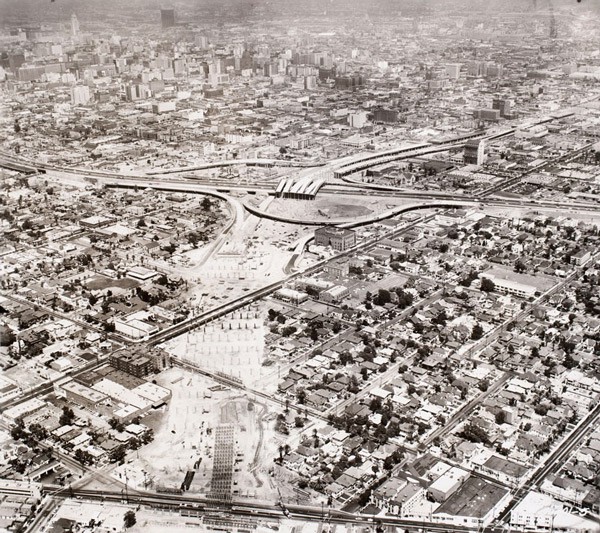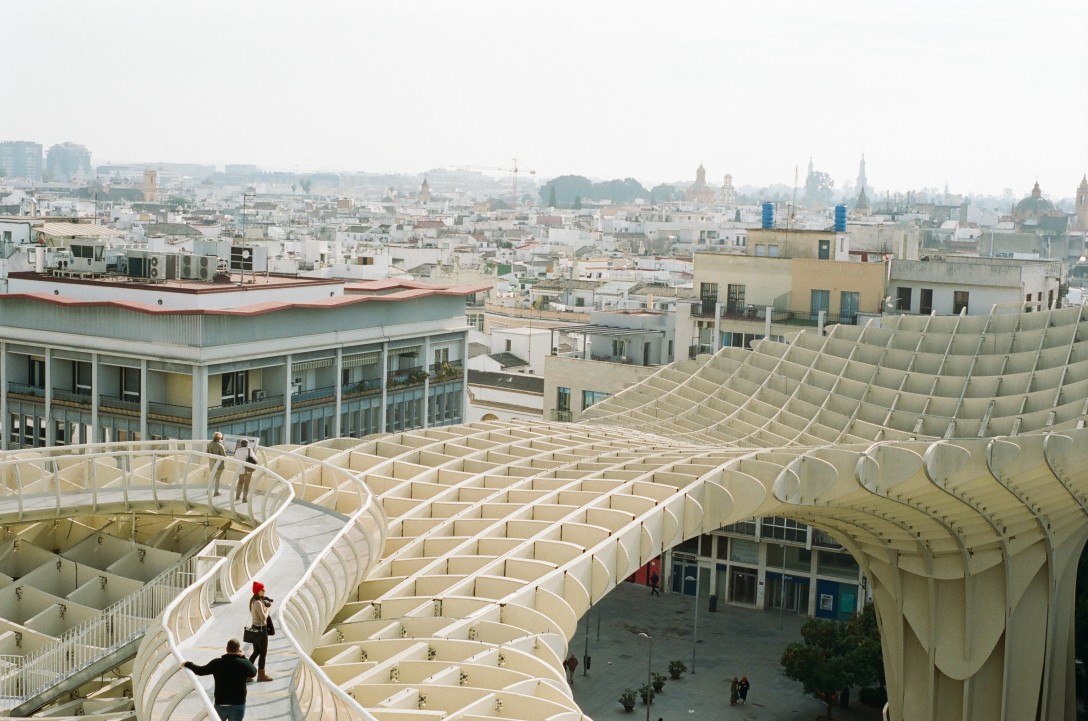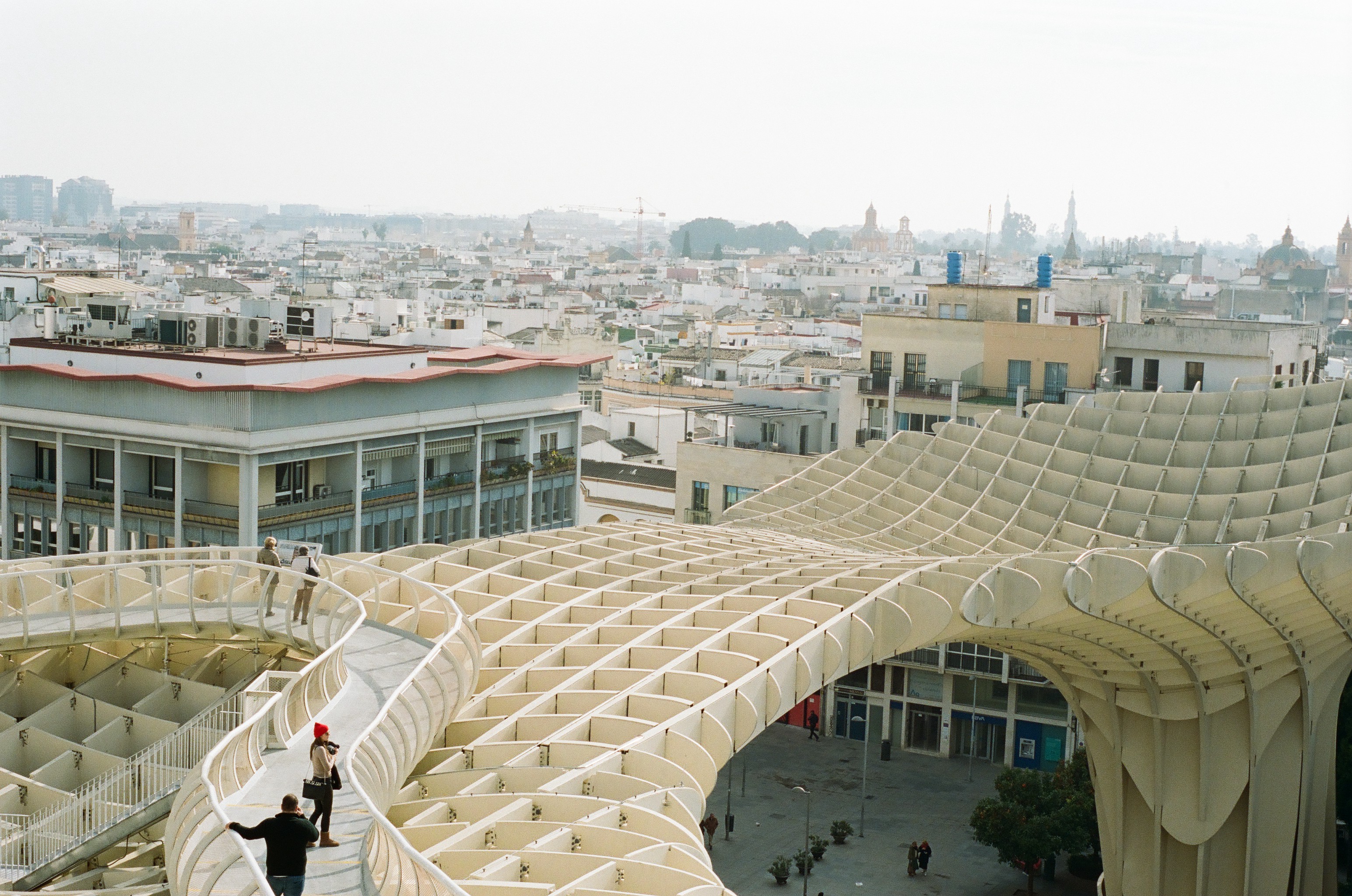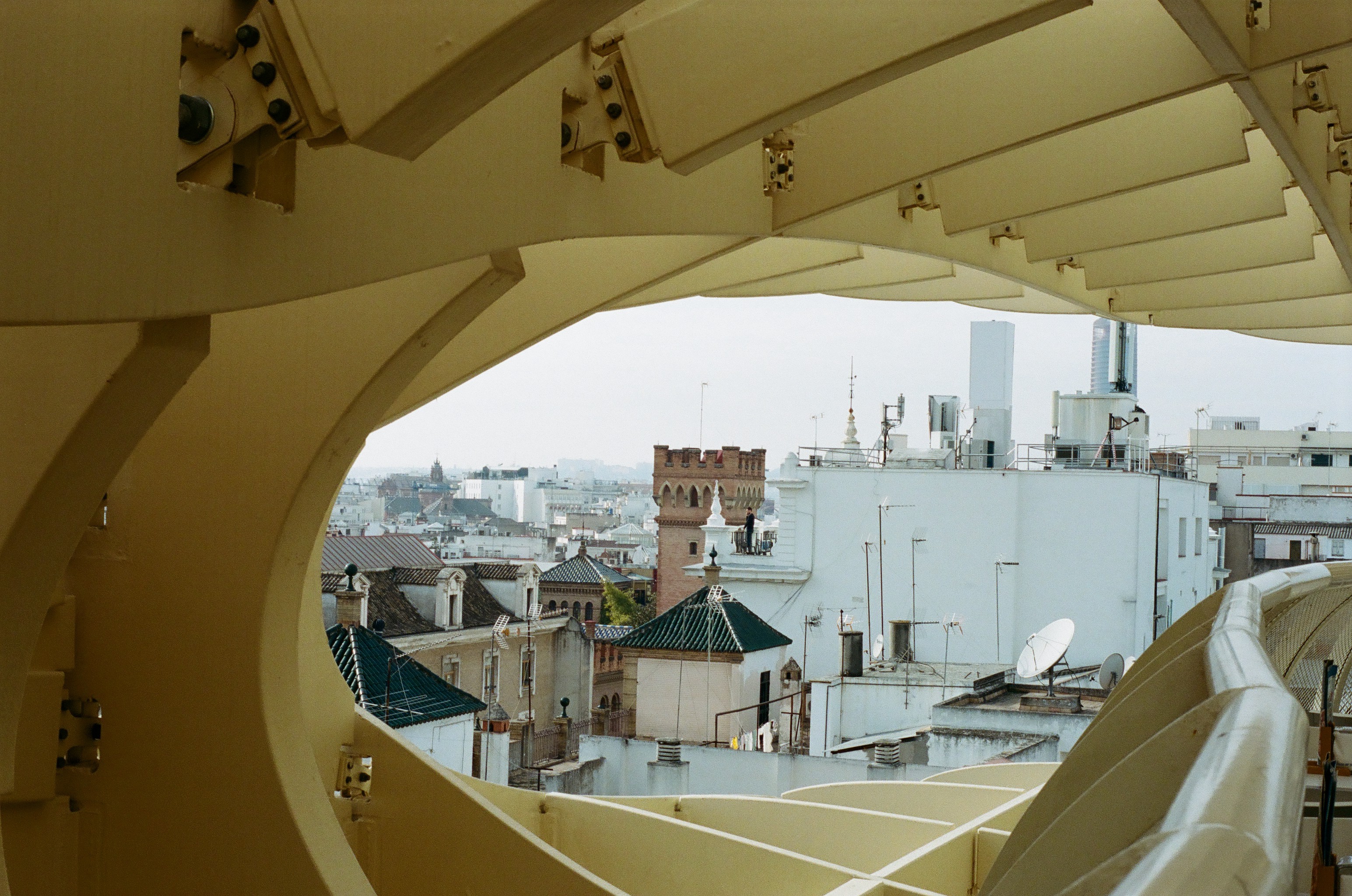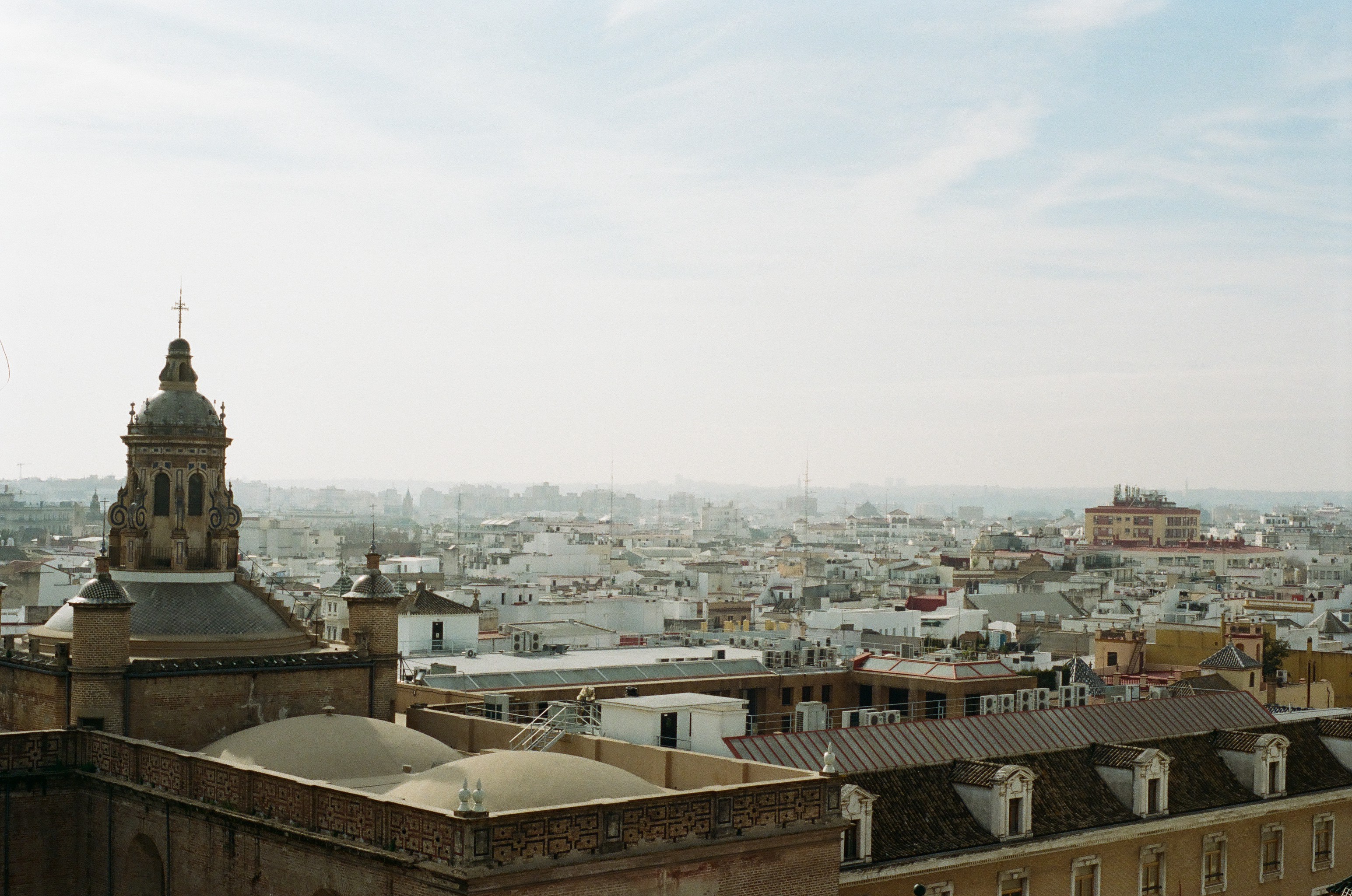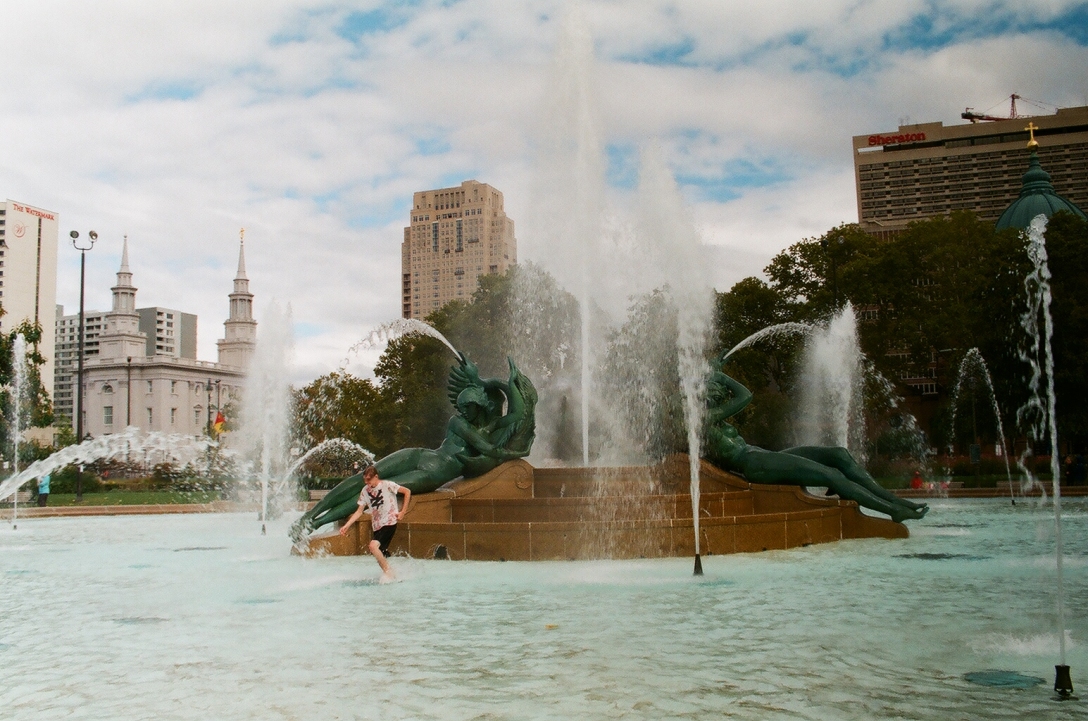In the week following the Northeast’s bomb cyclone, the sidewalks in New York City are a mess. Melting snow thaws along every curb, pooling at every intersection. It’s often impossible to cross the street without hazarding ankle-deep icy sludge. Holly Ojalvo has neatly classified the affected crosswalks into four charming types: the abyss, the sludge, the channel, and the holy grail.
But as the days pass with the same 19-degree weather, boot prints begin to appear in the snow, offering some guidance for how to cross safely. I know it’s an unintentional thing, but it always feels a little bit like someone is helping me out as we each make our way around the city. I’ll never know who made those particular tracks, but I certainly benefited from them.
This is maybe a tenuous connection to the other thing that has been on my mind these last few weeks, which is how a community cares for its members. Sometimes, it’s ultra-passive, like the boot prints, or leaving free stuff on the curb. But sometimes, it’s active. People organize, form phone trees, create community fridges and closets, and volunteer to do grocery runs. These types of assistance all fall within the umbrella of mutual aid. Mutual aid’s grounding ethic is “solidarity, not charity,” and the concept has deep historical roots. It hasn’t always had a name- mutual aid “predates colonialism and capitalism” as a long-standing practice among Black, Indigenous, and people of color (Mutual Aid NYC).
A long history
Mutual aid has received a lot of attention in the last few years because it helps neighbors support each other during times of crisis (hello, pandemic). But for many communities, mutual aid is nothing new, and has actually been routinely criminalized for its anti-capitalist strategies (Mutual Aid NYC). Rather than a short-term solution to the impacts of a single event, mutual aid is meant to be a lasting commitment to the community, involving each member to contribute as they are able. Contributions can be financial but are often exchanges of services, skills, and other resources. A local mutual aid group is not simply a fundraising mechanism, it directly engages community members and attempts to address their needs. For instance, the Clinton Hill Fort Greene Mutual Aid group in Brooklyn does grocery shopping and delivery for those who request it, perform wellness check-ins via phone call, and trains community members to process and fill requests for assistance, as well as collecting funds to be redistributed (Clinton Hill Fort Greene Mutual Aid).
Mutual aid as a form of care is radical because it defies the capitalist logic of concentrating resources. Instead, it focuses on sharing and exchanging resources equitably. This has long been a valuable strategy for communities whose access to resources has been routinely and systemically restricted. A famous example is the Black Panthers’ Free Breakfast for School Children Program, which did exactly what the name indicates (Blakemore). Another case is the Young Lords’ “garbage offensive” of 1969, which entailed demands for adequate sanitation services in East Harlem (Museum of the City of New York)- Interestingly, New York’s Department of Sanitation (DSNY) ties into this story again very shortly.
Yet another example is the work of Chinese Six Companies, a federation of mutual aid groups in San Francisco’s Chinatown which, during the late 19th century, addressed inadequate medical care and violently racist “medical scapegoating” by creating its own hospital. It was the “first Chinese-American medical facility in the continental U.S,” which eventually “became the Chinese Hospital, which now has locations all over the Bay Area” (Wang).
The important thing here is that countless groups over the last several centuries have performed mutual aid and have been villainized for it, because they are responding to oppressive conditions. As intuitive as direct community-based assistance may seem, its history is an essential piece to consider as so many neighborhoods explore mutual aid for the first time in response to the Covid-19 pandemic.
A crisis of care
Several compounding crises of care have become starkly visible over the course of the ongoing pandemic. First, healthcare workers all over the world became the first line of defense against a virus we knew far too little about. Overwork, acute stress, and being undervalued and underpaid created a dangerous whirlwind for the people risking their lives to save ours. Then, as schools shut down, parents faced a crisis of homeschooling and a lack of childcare as they tried to balance their own work, if they were lucky enough to still have jobs. The severe strains of the pandemic are highly familiar by now, so there’s no need to emphasize any more details. But this cultural moment has prompted a lot more questioning of how we value our care workers and systems of care. Luckily, there is a useful volume of writing and research on this very subject.
One text that is especially helpful in exploring problems of care in a capitalist economy is the Care Collective’s The Care Manifesto: The Politics of Interdependence (2020). The Collective identifies a societal failure to “care for each other, especially the vulnerable, the poor, and the weak” (The Care Collective, p. 2). What’s more, neoliberal market logic has made profit “the organizing principle of life,” relegating care and wellbeing to the sidelines (The Care Collective, p. 3).
In a 2010 interview with Amy Goodman, economist Manfred Max-Neef proposed a new economic paradigm altogether, an alternative to this profit-centered system currently in place. To Max-Neef, life should be at the center of everything, not profit. Growth has limits, which we are approaching rapidly, and, Max-Neef states, “the fundamental value to sustain a new economy should be that no economic interest, under no circumstance, can be above the reverence of life” (Goodman).
Folded into the capitalist framework is also, of course, the patriarchy. Care work has historically been linked to women, contributing to its undervaluation. Care is not associated with productivity and is not quantified in the same way as the roles we tend to value and compensate. The artist Mierle Laderman Ukeles explored this divide over the course of her 50-plus year career.
When Ukeles had her first child in 1968, she was upset by the duality she experienced as an artist and a caretaker. She committed the rest of her career to blending caretaking with art, identifying as art the care work performed by herself as well as others. She famously became the artist in residence for New York City’s Department of Sanitation (DSNY) (remember them?), a position which she has maintained for over 40 years (Steinhauer). She spent 11 months from 1979 to 1980 shaking the hand of every sanitation worker in the city, totaling around 8,500 people. She also challenged traditional dynamics of care work by cleaning the floors of an art museum while it was open, displaying the type of labor typically performed by people of color and not made visible (Wetzler). Her most recent project has been engaging with the Staten Island landfill Fresh Kills, which she considers a “true social sculpture” of “individual decisions and acts of rejection” (Steinhauer). Systems of care and cycles of waste are often linked in this way and have a lot to do with how our economies and cities are structured.
This piece is the first in a three-part series on care in cities. The next installment will focus on how zoning and architecture undervalue care and the history of care cooperatives. For more history on mutual aid, I highly recommend Ariel Aberg-Riber’s visual history of mutual aid, which can be found here, as a starting point.
Thank you for reading! If you enjoyed this piece, please consider subscribing to email updates from the blog and following @thepeoplecity on Instagram.
Sources
Blakemore, Erin, “How the Black Panthers’ Breakfast Program Both Inspired and Threatened the Government,” Updated January 29, 2021. History. https://www.history.com/news/free-school-breakfast-black-panther-party.
Clinton Hill Fort Greene Mutual Aid, “About us,” Accessed February 4, 2022. https://chfgma.org/.
Goodman, Amy, “Chilean Economist Manfred Max-Neef: US Is Becoming an “Underdeveloped Nation,” Democracy Now! September 22, 2010. https://www.democracynow.org/2010/9/22/chilean_economist_manfred_max_neef_us.
Museum of the City of New York, “Power to All Oppressed People: The Young Lords in New York 1969-1976,” Museum of the City of New York: Activist New York. Accessed February 4, 2022. https://activistnewyork.mcny.org/exhibition/economic-rights/young-lords.
Mutual Aid NYC, “The History of Mutual Aid + Ways to Keep Showing Up,” June 12, 2020. https://mutualaid.nyc/2020/06/12/the-history-of-mutual-aid-ways-to-keep-showing-up/.
Steinhauer, Jillian, “How Mierle Laderman Ukeles Turned Maintenance Work into Art,” Hyperallergenic. February 10, 2017. https://hyperallergic.com/355255/how-mierle-laderman-ukeles-turned-maintenance-work-into-art/.
Wang, Claire, “When Chinese Americans Were Blamed for 19th-Century Epidemics, They Built Their Own Hospital,” Atlas Obscura. April 13, 2020. https://www.atlasobscura.com/articles/chinese-blamed-19th-century-epidemics.
Wetzler, Rachel, “Meet the artist who called out a museum by scrubbing the floor for hours,” Timeline. December 15, 2016. https://timeline.com/mierle-ukeles-cleaning-museum-64d274a0a19c.





